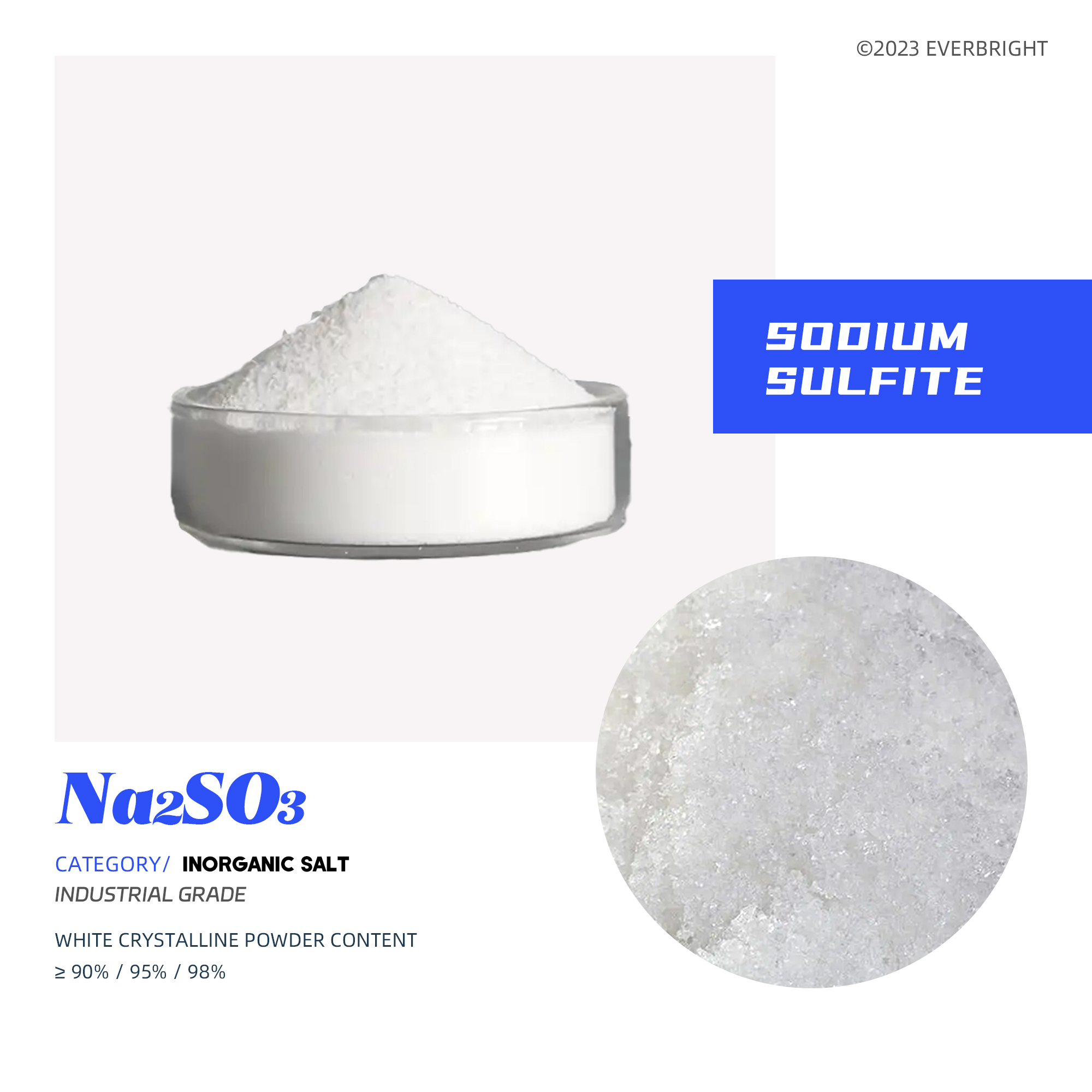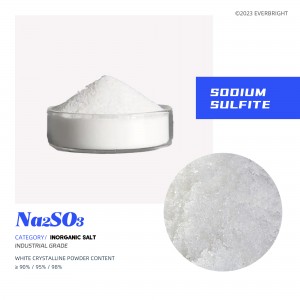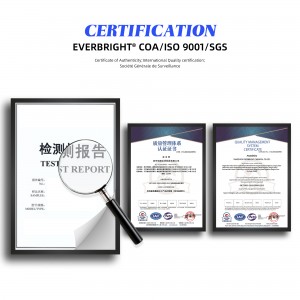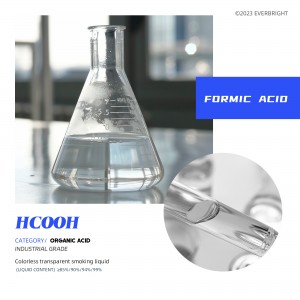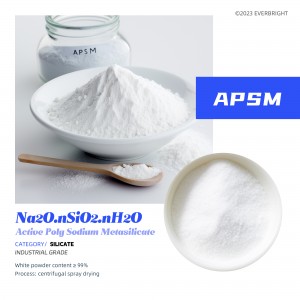Sodium Sulfite
Product Details

Specifications provided
White crystal (Content ≥90%/95%/98% )
(Scope of application reference ‘product usage’)
Also known as sodium sulfate acid. Its anhydrous substance is hygroscopic. Aqueous solutions are acidic, and the pH of 0.1mol/L sodium bisulfate solution is about 1.4. Sodium bisulfate can be obtained in two ways. By mixing the amount of such substances as sodium hydroxide and sulfuric acid, sodium bisulfate and water can be obtained. NaOH + H2SO4 → NaHSO4 + H2O Sodium chloride (table salt) and sulfuric acid can react at high temperatures to form sodium bisulphate and hydrogen chloride gas.
EVERBRIGHT® ‘ll also provide customized :content/whiteness/particlesize/PHvalue/color/packagingstyle/ packaging specifications and other specific products that are more suitable for your use conditions , and provide free samples.
Product Parameter
7757-83-7
231-821-4
126.043
Sulphite
2.63 g/cm³
soluble in water
315℃
58.5 ℃
Product Usage



Main use
Cleaning product
One of the main uses of sodium bisulfate in commercial products is as a component of cleaning products, where it is primarily used to lower pH. The main product for which it is used is detergent.
Metal finishing
Industrial grade sodium bisulfate is used in the metal finishing process.
Chlorination
Used to reduce the pH of water to support efficient chlorination, which is important for sanitation purposes when many people share water. Therefore, sodium bisulfate is a useful product for those who have a swimming pool, jacuzzi or hot tub. This is the most common reason people buy unprocessed sodium bisulfate instead of as an ingredient in another product.
Aquarium industry
Similarly, some aquarium products use sodium bisulfate to lower the pH of the water. So if you have an aquarium in your home, you might consider it an ingredient in the products you buy. Animal control While sodium bisulfate is harmless to most life forms, it is highly toxic to some echinoderms. Therefore, it has been used to control outbreaks of crown-of-thorns starfish.
Textile
Sodium bisulfate is used in the textile industry in the production of velvet fabrics known as burnt velvet. It is a velvet cloth with a silk backing and a cellulose based fibre down, such as hemp, cotton or rayon. Sodium bisulfate is applied to certain areas of the fabric and heated. This makes the fibers brittle and causes them to fall off, leaving a pattern of burned out areas on the fabric.
Poultry breeding
People who raise chickens will find sodium bisulfate in several products they use. One is chicken litter, because it controls ammonia. Another is a coop cleaning product because it can reduce the concentration of salmonella and campylobacter. Therefore, it plays an antibacterial role against certain bacteria.
Cat litter production
Sodium bisulfate can reduce the odor of ammonia, so it is added to pet cat litter.
Medicine
Sodium bisulfate is a urine acidifier, so it is used in some pet medications to treat problems related to the urinary system. For example, it is used to reduce urinary stones in cats.
Food additive
Sodium bisulfate is used as a food additive in various food production processes. It is used to ferment cake mixes and prevent Browning in fresh produce and meat and poultry processing. It is also used in sauces, fillings, dressings and drinks. In addition, it is sometimes used in place of malic acid, citric acid, or phosphoric acid because it can lower the pH without producing a sour taste.
Leather production
Sodium bisulfate is sometimes used in the leather tanning process.
Dietary supplement
Some dietary supplements may contain sodium bisulfate.





